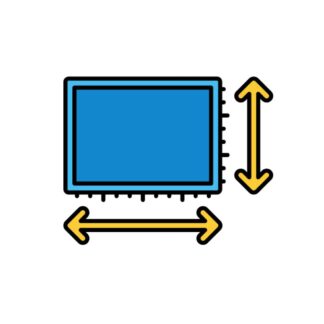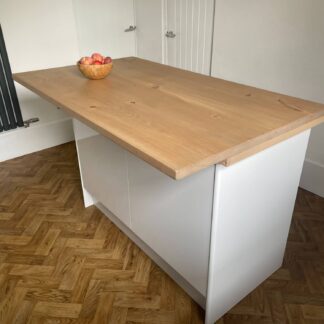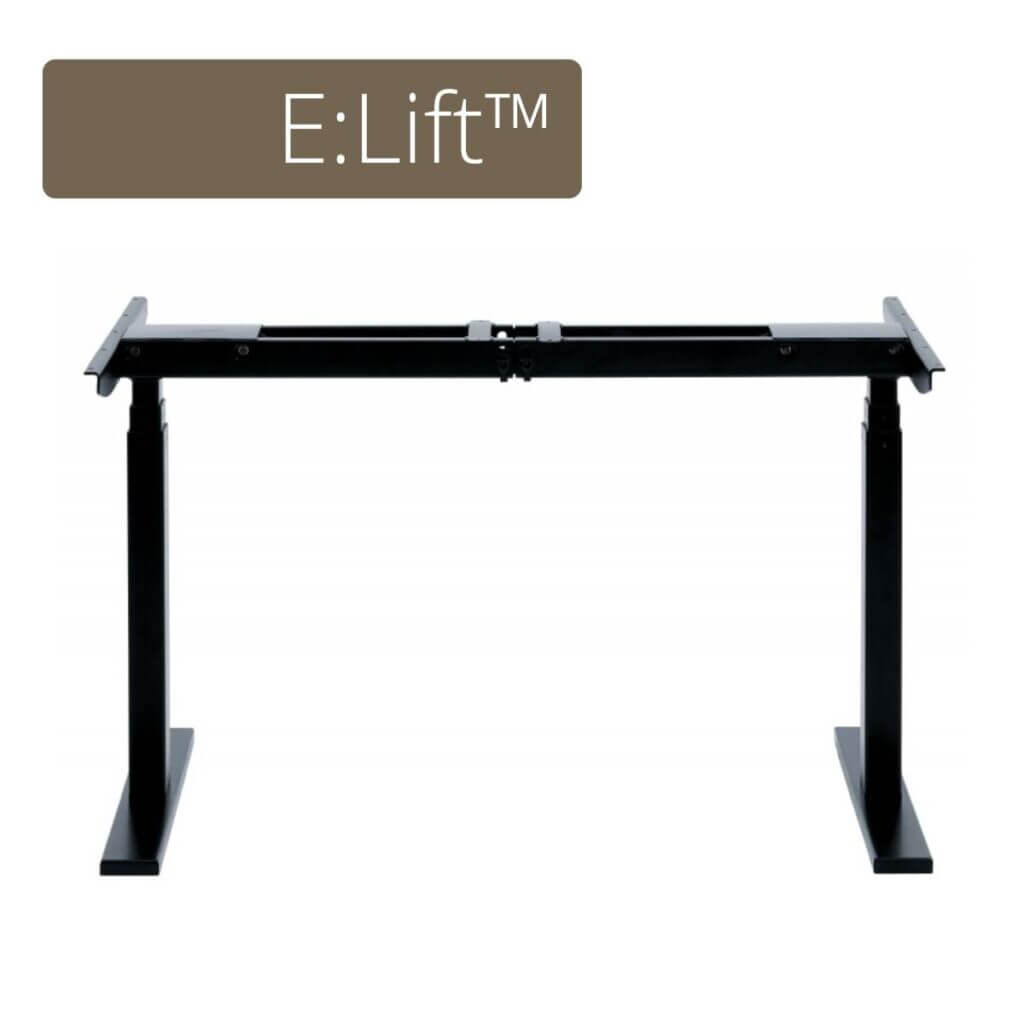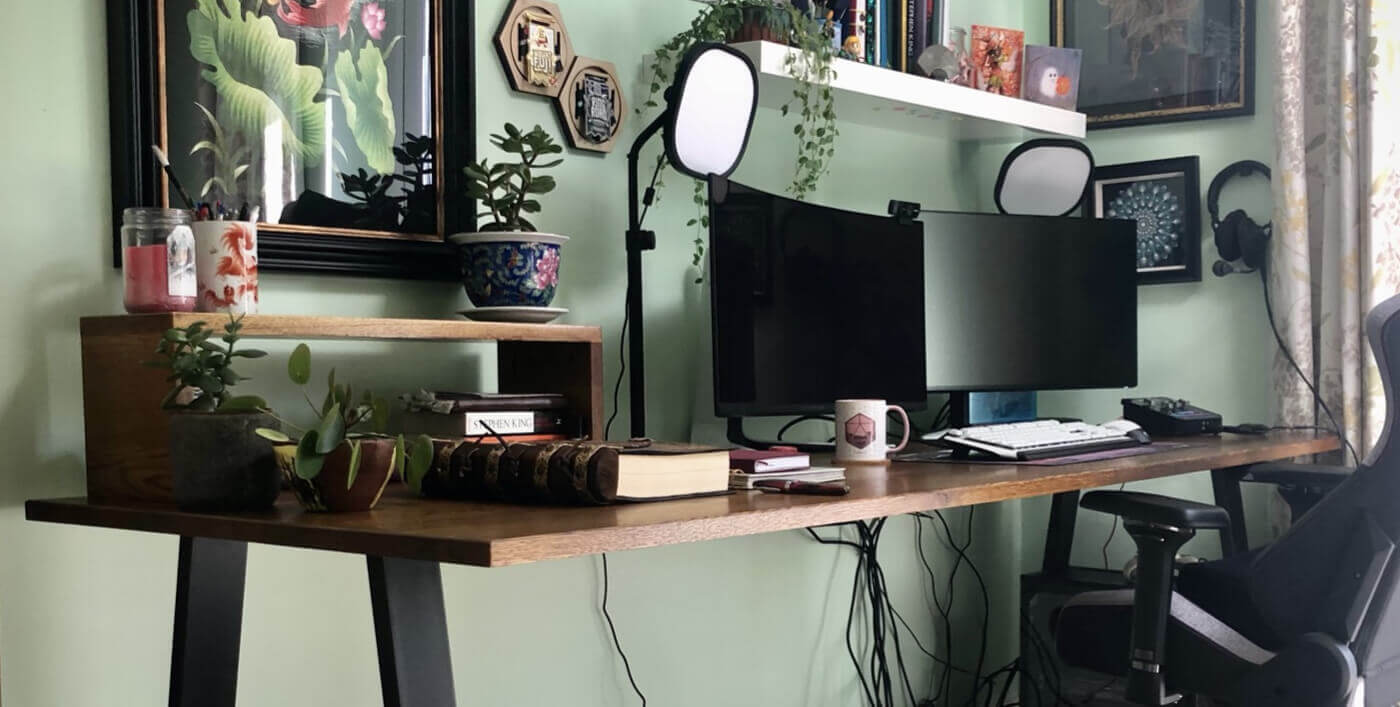
Our name, Solid Wood Tops, hopefully communicates if you need a top, we can help! But you might be a little confused as to the differences between desktops, worktops and table tops. Let’s break it down into 4 areas: uses, sizes and finishes then finally what the tops are most often made from.
Usage and functionality
The term worktop is generally associated with tops designed for use in the kitchen, bathroom or a working environment (shed, factory etc).
When people mention desktops, the main use case is the office – at home or a place of work. The main requirements for this type of surface are comfort, smooth surfaces, aesthetic appeal and ease to keep clean. Desktops prioritise comfort by having rounded or chamfered edges and ergonomic shaping.
Table tops are found in dining rooms, living areas, and social spaces as such, they need to work harder to balance comfort and durability. Table tops will be used to eat and drink from, but rarely to prepare meals. People could sit around a dining table for many hours, so comfort on the edges are important etc. The surface being super smooth is less important for some table tops.
Common depths, lengths and thicknesses
Standard wood worktops range from 600mm to 650mm in depth, fitting most kitchen cabinets, with larger options for islands. Worktop lengths typically range from 1.5 meters to 4 meters. Worktops are generally 30mm to 40mm thick.
Desktops usually range from 700mm to 800mm in depth, suitable for single workstations. Desktop lengths commonly fall between 1200mm and 1800mm, with most people opting for the largest desk that can reasonably fit in the space. The thickness of desktops ranges from 18mm to 25mm.
Table tops are harder as their usage is more varied, dining tables typically measure 900mm to 1200mm in depth, but coffee tables and smaller tables can be as small as 400mm square. Lengths for dining tables range from 1.5 meters to 2.5 meters. The thickness of table tops generally varies from 25mm to 40mm.
Finishes and maintenance
Worktops can go both ways. Either an extremely robust finish, or no finish. On the durable side, for domestic use, a poly finish would be applied. An oil finish can be used in the kitchen and will bring out the grain and provide a degree of water resistance, but will need very regular up keep. Related: How to water proof a solid wood desk: polyurethane, lacquer, OSMO, wax & oil finishes
To enhance the character of the top, and to keep the touch as natural as possible, desktops often use a standard oil or wax finish. Most people will be careful with liquids, and so oil provides a good balance between protecting and spot repair. Related: How to repair a damaged area on your solid wood desk top. When tops are stained they often require an additional finish to lock the colour in.
Table tops again land in the middle. It’s important to highlight the wood’s natural beauty, but the top will come up against a fair amount of food and water. There are some poly finishes which offer alot of protection, as well as being food safe, and releasing no volatile compounds. Related: What is a solid wood finish? Which finish is best for your desk/table top?
What wood works best?
Of the three, due to the requirement to withstand heavy use, moisture, heat, and things that can stain (food, spices, chemicals, paint etc) a worktop is less frequently made of solid wood, but when it is, it would often be made from a hardwood, like oak or walnut; albeit with a hardwearing finish, or when there is no requirement for the wood to be kept in great condition. Nothing beats solid wood when the surface needs to be sturdy, hardwearing and last for a long time.
Desktops can be made from hardwoods like oak, but rarely is this required unless monitor mounts or camera clamps are used, so pine and other softwoods can be used for desks. Many desks are not made from solid wood, preferring melamine or particle board instead when there are limited durability or aesthetic requirements.
When choosing a wood for a table top, oak is by far the most popular. Followed by pine then walnut, primarily for budget reasons. Table tops can often be very deep, which makes walnut very expensive and pine’s price point very attractive.
Configure your solid wood top today
Why Solid Wood Tops?
Custom size? Same price.

Desk top prices are worked out using a going market rate formula. There are no extra charges for non-regular sizes. Calculate your price and order in minutes.
FAQs

Learn more about us, the quality of our partners sustainably sourced wood, how desk tops are priced, delivery timescales etc. Read our articles, FAQs, or chat now.
Flexible delivery options

Our trusted partners are located around the country. Allow us to arrange delivery, pick up from the workshop yourself, or book your own courier.
Money back promise

Order requests have no cost or obligation. If you do decide to confirm, you are protected if there is a problem with the size, design, quality or wood. Order with confidence.






